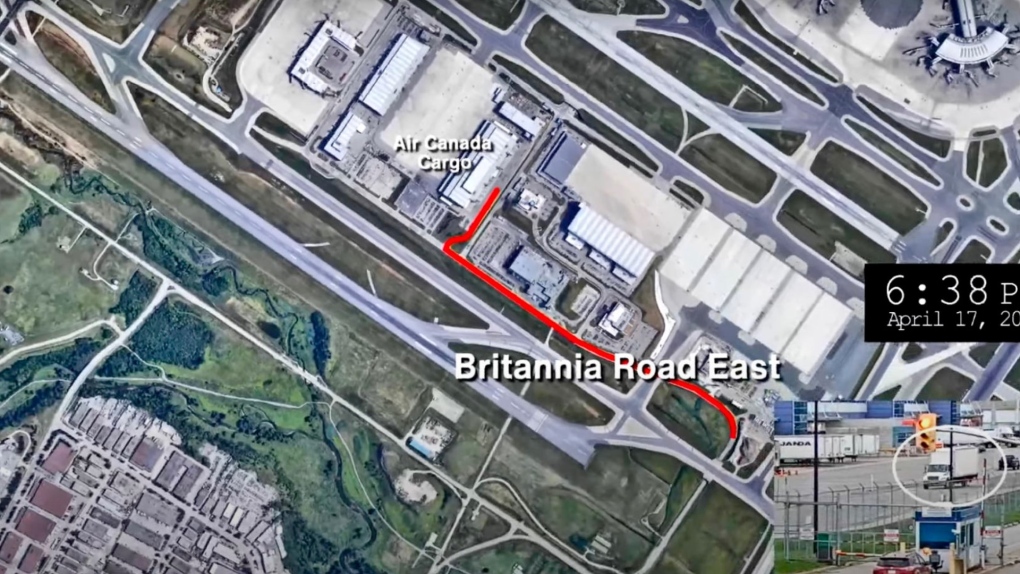Article content
There’s a price shocker coming at the pumps.
|
|
Canada’s labour market showed minor signs of softening in May, but economists and other experts said the Bank of Canada likely wouldn’t read the numbers as a sign that its rate-tightening campaign aimed at bringing down inflation is working.
Unemployment rose to 5.2 per cent from five per cent, the first increase since last August, according to the Statistics Canada Labour Force Survey for May.
The numbers released Friday said the economy lost 17,000, though employment overall was little changed.
Randall Bartlett, senior director of Canadian economics at Desjardins, cautioned that job losses were concentrated among the youngest workers in Canada as they enter the summer jobs season, and “not necessarily characteristic of what we’re seeing in the underlying labour market.” He said the job losses can’t yet be seen as a “trend.”
“We need to see how this shakes out in the months ahead, and then we’ll decide what it means for monetary policy,” Bartlett told BNN Bloomberg in a television interview.
Dominique Lapointe with Manulife Investment Management noted “small loss” mostly among the younger age group of workers should be interpreted with caution, as seasonal adjustments can be challenging for that demographic. He also pointed out that employment rose among core-aged workers.
WHAT DOES IT MEAN FOR THE BANK OF CANADA?
The jobs numbers came days after the Bank of Canada resumed its interest rate tightening cycle, hiking its key rate by a quarter of a percentage point to 4.75 per cent after a string of unexpectedly hot economic data.
Lapointe said he is expecting another rate hike next month based on recent inflation and GDP readings. He said the jobs numbers aren’t significant enough to change the central bank’s path.
“I don’t think this morning’s (Labour Force Report) report would change what’s going to happen in July. We’d probably need to see way more weakness in other economic indicators before the next meeting for them to change their course,” he said.
Jay Zhao-Murray, FX Analyst at Monex Canada, noted that the data that went against economists’ expectations for job gains in May, but agreed that the numbers wouldn’t shift the central bank’s thinking.
“With employment cooling on the whole, this latest report does weaken the case for further hikes from the Bank of Canada, but given the details and composition of employment changes, we do not think it would materially change the Bank’s latest view on the economy,” he said in a written statement.
He said he is expecting another 25-basis-point rate hike from the Bank of Canada in July, “unless the subsequent data also confirm the negative signal from today’s report.”
Economist Tuan Nguyen of RSM Canada, meanwhile, said “there are reasons to believe that May’s decline in net jobs is not a fluke,” given that most of the job losses were in business, professional services, and trades.
Taken with an uptick in the unemployment rate, he pointed to signs that “a long-awaited softening of the labor market has finally arrived.”
“Following Friday’s job data, the Bank of Canada’s decision to hike the rate to 4.75 per cent … might be the last one in this cycle. Nevertheless, we continue to believe that rates should remain at that level at least until the end of the year to ensure substantial easing of inflation,” Nguyen said in a written statement.
WAGES
Wages, which the Bank of Canada has zeroed in on as a particular concern in its inflation fight, rose 5.1 per cent year-over-year in May.
Bartlett made the case that wage growth in Canada is more “subdued” than it might appear.
He noted that StatsCan’s monthly wage reading is one of several wage indicators that the Bank of Canada looks at, and others appear to be decelerating more quickly, meaning that “wages are not the concern we had anticipated” when it comes to the possibility of a “wage-price spiral” some economists fear could push inflation higher.
Regardless, Bartlett said he expects the Bank of Canada will interpret the labour force reading as a sign that Canada’s labour market remains “very tight.”
“It needs to see the unemployment rate move meaningfully higher (and) the job vacancy rate move meaningfully lower in order to be able to see wage growth come down to a level that’s consistent with two per cent inflation,” he said.
CONSUMER SPENDING CLUES
As for the sectors where people lost jobs in May, Bartlett said the data holds clues that Canadians are still spending money despite the high-interest rate environment.
“It’s not necessarily in sectors where you would think tight monetary policy and higher interest rates would be leading to job losses,” Bartlett said.
Accommodation, food services, arts and recreation were not hit particularly hard with losses, but those are areas where people generally cut back on spending in tough economic times, Bartlett said.
“We may see the consumer continue to be relatively healthy in the second quarter, and it may be maybe pointing to that still,” he said.





Gas prices have not been this high since August 2022

There’s a price shocker coming at the pumps.
Advertisement 2
Article content
Gas in Ontario, including the GTA, will go up 14 cents a litre overnight for customers filling up on Thursday, says Dan McTeague, the president of Canadians for Affordable Energy.
Article content
“So going from $1.65.9 (per litre) going to $1.79.9,” said McTeague adding the increase will affect the entire province except for northwestern Ontario, which gets its prices from the prairies market.
“That’s the highest level since August, 2022, almost two years ago,” he added.
Recommended from Editorial
McTeague said the reason for the price hike is that stations are switching over to summer-blend gasoline.
“Around this time of year prices go up to reflect the new blend of gasoline, which is more expensive to make,” he explained. “Butane is used in the winter, for gasoline, whereas in the summer it’s alkyaltes. Alkyaltes are extremely expensive.”
Advertisement 3
Article content
“In the winter you want your ignition to start quickly in cold temperatures, you uses volatile butane. You take that out in the summer. That’s a big difference. This is going to be around for awhile and it could get higher,” McTeague said.
McTeague also blamed the rise in gas prices in Canada on the carbon tax increase, the rising price of oil, and the weak Canadian dollar.
“It just makes a bad situation worse,” he said. “It’s just another brick in the wall, another load on the camel’s bank. The cost of denying our resources, blocking pipelines, is one of the most significant reasons why the Canadian dollar is so weak.”
Article content

CALGARY — A wildfire in west-central Alberta that was sparked by a natural gas pipeline rupture is under control, but an investigation into what caused the pipeline to break could take months or even years.
As of Wednesday morning, there was very little fire activity left in Yellowhead County, where a 10-hectare fire burned on Tuesday about 40 kilometres northwest of Edson.
“But for it to be considered extinguished, we’re going to have to hot spot,” said Caroline Charbonneau, area information co-ordinator with Alberta Forestry and Parks.
“That means we’ll have to dig into the ground, look and feel for hot spots, and then douse it with water. And that could take several days.”
ADVERTISEMENT
The fire on Tuesday, which occurred as much of Alberta is dealing with extremely dry early spring conditions, was sparked when a natural gas pipeline owned by TC Energy Corp. ruptured.
There were no injuries, and the fire was never a threat to any surrounding communities. The affected pipeline segment was isolated and shut in and there is no more gas leaking from the pipeline.
The Canada Energy Regulator had inspectors on site Wednesday to monitor the company’s response and the Transportation Safety Board is investigating the incident.
According to CER, there have been 12 natural gas pipeline ruptures in Canada since 2008, and Tuesday’s incident near Edson was the first rupture on that particular pipeline within that time period.
The 36-inch diameter pipe that ruptured is part of TC Energy’s NGTL pipeline system, which transports natural gas from Alberta and northeast B.C. to domestic and export markets. The system spans 24,631 kilometres and connects with TC Energy’s Canadian Mainline system, Foothills system and other third-party pipelines.
The NGTL pipeline system is like a web made up of different lines that have been developed in stages.
In 2022, there was a rupture on a separate part of the system that resulted in an explosion and fire near Fox Creek, Alta. There were no injuries.
A TSB investigation into that incident took more than 14 months, and concluded that the pipeline ruptured due to reduced pipe wall strength caused by external corrosion.
While the primary risk of a crude oil pipeline leak is an oil spill that harms the local ecosystem, natural gas pipeline ruptures can and do result in fires or explosions, said Bill Caram, executive director of the Pipeline Safety Trust, a U.S.-based non-profit organization.
“The chances are extremely high that a molecule of natural gas that enters a pipeline will go through that pipeline without a failure. Pipelines are quite safe, and when you look at incident rates compared to other modes of transportation like rail or truck, they are much less likely to have a failure,” Caram said.
“But what you don’t get a sense of by looking at the risks of pipelines in that way is how catastrophic a failure can be when it does happen.”
According to the TSB, there were 19 recorded incidences of fires related to pipelines in Canada between 2012 and 2022.
The TSB’s most recent report on pipeline transportation safety in Canada states that in 2022 there were 100 companies transporting either oil or gas or both in the federally regulated pipeline system, which includes approximately 19,950 km of oil pipelines and approximately 48,700 km of natural gas pipelines.
That year, there were 67 pipeline transportation accidents and incidents on federally regulated pipeline systems, according to the report.
That number was well below the 10-year average of 112 occurrences, and was also the lowest number of occurrences since 2019, when 52 pipeline accidents or incidents were recorded by the TSB.
The TSB defines a pipeline “accident” as an incident that results in a person being injured or killed, a fire or explosion, or significant damage to the pipeline affecting its operation.
Less severe pipeline events that involve the uncontrolled release of a commodity or a precautionary or emergency shutdown are classified by the TSB as “incidents.”
There have been no fatal accidents directly resulting from the operation of a federally regulated pipeline system since the inception of the TSB in 1990.
This report by The Canadian Press was first published April 17, 2024.
Companies in this story: (TSX:TRP)
Amanda Stephenson, The Canadian Press
Police say one former and one current employee of Air Canada are among the nine suspects that are facing charges in connection with the gold heist at Pearson International Airport last year.
At a news conference Wednesday on the one-year anniversary of the heist, police confirmed that five suspects were arrested and four others are facing charges in connection with the largest gold theft in Canadian history.
Police said the suspects face a total of 19 charges and Canada-wide warrants have been issued for the arrest of three of the suspects who have not yet been apprehended. All of the suspects arrested in connection with the heist have been released on bail, police confirmed in a news release issued Wednesday.
Peel Regional Police Chief Nishan Duraiappah said the heist was “carefully planned” by a “well-organized group of criminals.”
“This story is a sensational one and one which probably, we jokingly say, belongs in a Netflix series,” he said.
Police said 6,600 gold bars were stolen from Air Canada’s cargo facility on the evening of April 17, 2023 by a suspect who arrived at the warehouse in a five-tonne delivery truck.
The gold, along with about $2.5 million in foreign currency, had been shipped to Toronto from Zurich in the hull of an Air Canada plane and was offloaded to an Air Canada cargo facility shortly after the flight landed at Pearson Airport that afternoon.
Police allege that the suspect came into possession of the stolen gold and bank notes after presenting Air Canada personnel with a fraudulent airway bill.
“The airway bill was for a legitimate shipment of seafood that was picked up the day before,” Det.-Sgt. Mike Mavity, the major case manager for the joint investigation, dubbed Project 24K, told reporters on Wednesday.
“This duplicate airway bill was printed off from a printer within Air Canada cargo.”


Brinks Canada, which was hired to provide security and logistics services for the transportation of the shipment, showed up at the facility a few hours later to pick up the items, police said.
According to investigators, when Air Canada employees tried to locate the container, they realized it was missing and quickly launched an internal investigation. Police were notified about the stolen goods shortly before 3 a.m. the following day, Mavity said.
An exhaustive investigation followed, police said, with officers reviewing video surveillance footage from 225 businesses and residences in an effort to track the path of the truck, which has since been recovered.
Mavity said that last summer, they identified 25-year-old Durante King-McLean as the driver of the truck but were unable to locate him.
In September 2023, Mavity said King-McLean was stopped in rental vehicle by Pennsylvania State Police near Chambersburg, Pennsylvania.
“After a brief foot chase, he was detained and troopers located 65 illegal firearms in the vehicle,” Mavity said Wednesday.
According to Mavity, investigators believe that the stolen gold was melted down and sold and the proceeds were used to purchase illegal guns for a firearms trafficking operation.
He said members of Project 24K have been liaising with the U.S. Alcohol, Tobacco, and Firearms Bureau (ATF) with respect to this aspect of the investigation.
Speaking at the news conference on Wednesday, a representative from the ATF said the law enforcement agency believes the 65 guns seized during the arrest of King-McLean were bound for Canada.
While King-McLean is currently in custody in the United States, he is now wanted on multiple charges in connection with the gold theft.
“We are alleging that some individuals who participated in this gold theft are also involved in aspects of this firearms trafficking,” Mavity added.


Two “debt lists” were found by investigators at separate locations during the investigation, police said.
“A common term in drug trafficking investigations, we believe these lists actually show where the money was distributed when the gold was sold by the suspects,” Mavity said.
He said the names on both lists are “consistent” and police are trying to identify all of those identified.


Police said one current Air Canada employee, identified as 54-year-old Brampton resident Parmpal Sidhu, has been charged with theft over $5,000 and conspiracy to commit an indictable offence. A Canada-wide warrant has been issued 31-year-old Simran Preet Panesar, who police said resigned from his position as a manager at Air Canada back in the summer.
“He has been known to us since early on in the investigation. He actually led a tour for Peel Regional Police before we knew his involvement,” Mavity said Wednesday.
He added that police have an idea where Panesar may be but did not elaborate on a possible location.
Mavity said he believes the suspects needed employees on the inside to carry out the heist.
“Because of their position within Air Canada, in my opinion, yeah they needed people inside Air Canada to facilitate this theft,” he said.

Loblaws Canada groceries: Shoppers slam store for green onions with roots chopped off — 'I wouldn't buy those' – Yahoo News Canada
Rupture on TC Energy's NGTL gas pipeline sparks wildfire in Alberta – The Globe and Mail
Saudi Arabia Highlights Investment Initiatives in Tourism at International Hospitality Investment Forum




Cytiva Showcases Single-Use Mixing System at INTERPHEX 2024 – BioPharm International
Squatters at Gordon Ramsay's Pub Have 'Left the Building' After Turning It Into an Art Café – PEOPLE




The Earthquake Shaking BC Politics




Bill Morneau slams Freeland’s budget as a threat to investment, economic growth




Nasa confirms metal chunk that crashed into Florida home was space junk
Comments